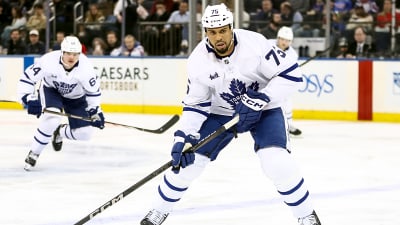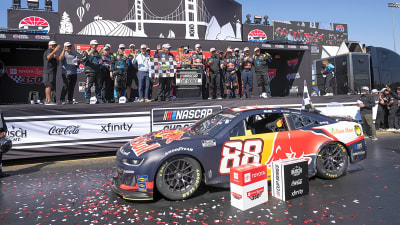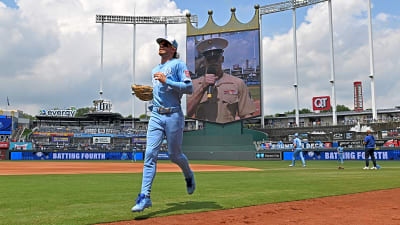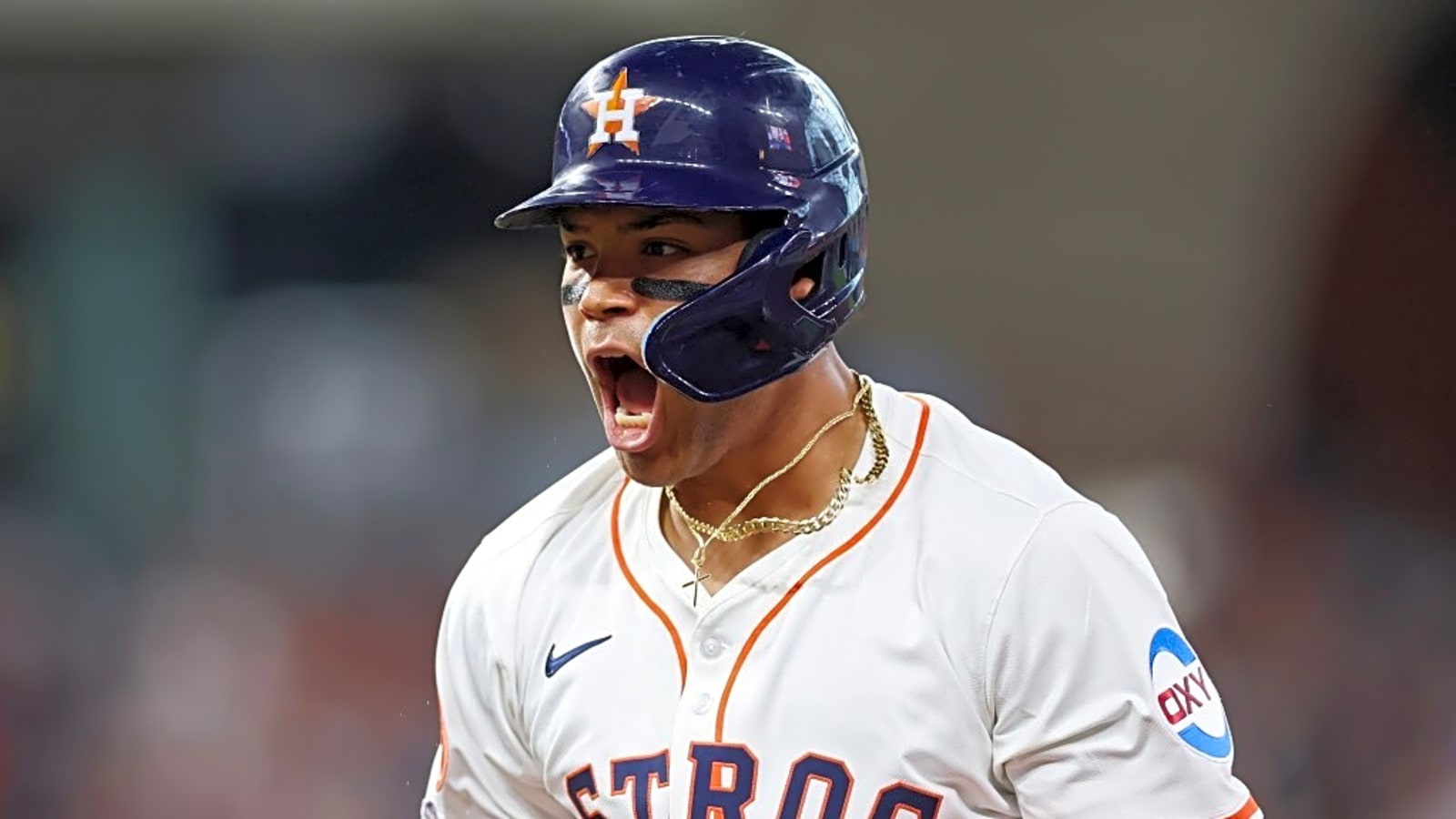
The Houston Astros continue to stay competitive, even as they gradually lose members of their initial winning core.
Many thought that Houston’s run of dominance may be coming to a close after last season. They won the American League West at 88 wins but were swept in two games in the Wild Card round by Detroit.
This past offseason, the organization decided to part ways with star outfielder Kyle Tucker and long-time closer Ryan Pressly via trade, as well as letting their third baseman Alex Bregman depart in free agency. While the Astros still had a good roster on paper, it was possible that this would be more of a re-tooling year before they try to compete again in 2026.
It seemed like the door may be opening for Texas or Seattle to wear the division crown this season. The Rangers won the World Series just a couple of years ago, and the Mariners have a great pitching staff. However, the Astros had other plans.
As things stand currently, Houston owns the third-best record in the league at 54-35. The most surprising part of their dominance has been that their best hitter, Yordan Alvarez, has missed more than half of the season with a hand fracture. The Astros’ winning ways have been buoyed by outstanding pitching.
This run of Astros success has withstood two front office regimes and three managers. After their previous regime was overthrown a few years ago due to the sign stealing scandal, current general manager Dana Brown hasn’t missed a beat. Under Brown’s watch, the organization has gone 232-179 (.564) despite slowly shedding those key members of the team’s previous success.
In this piece, we’ll discuss the key reasons why the Astros remain among the league’s best in 2025.
All stats updated prior to games on Sunday, July 6
Pocket Aces
The Astros knew coming into the season that they had a key cog in their rotation in left-hander Framber Valdez.
Valdez, 31, made at least 28 starts with a sub-3.50 ERA in each of the past three seasons entering 2025. This year, Valdez has picked up right where he left off, pitching to a 2.90 ERA (3.14 xFIP) in 115 innings with a solid 15.8% K-BB%.
The southpaw has never been an elite strikeout artist, but his 24.6% K-rate is above the major league average. What Valdez is consistently good at is locating his sinker to induce ground balls, as well as throwing a nasty curveball. Valdez’s combination of stuff and location this season has him on pace for a career-high Pitching+ grade of 112.
What the Astros may not have predicted was that they’d have an even better arm than Valdez. That pitcher is right-hander Hunter Brown.
Brown, 26, was a fifth-round draft pick out of Wayne State in 2019, by the organization’s previous regime. It took him about a year and a half to get settled in the major leagues as a starter, but since then he has been one of its best.
In 2023, Brown threw 155.2 innings for Houston but finished with a lackluster 5.09 ERA. He’s always had a good fastball and strong strikeout rates, so the club continued to utilize him as a starter. Last season, Brown had a 7.06 ERA in his first ten starts, largely due to a meltdown that saw him surrender nine runs without making it out of the first inning. From that point on, Brown made 21 starts with a 2.27 ERA. He had cemented himself as a quality arm.
This year, Brown has continued to improve. His strikeout rate jumped seven percent to an elite 32.1% mark. His 7.4% walk rate is also the best of his career. By Stuff+, Brown’s four-seamer (116), sinker (117), and cutter (102) all grade out as above average fastballs. His knuckle curve (107 Stuff+) is his best off-speed offering, and this version is the best he’s ever thrown, by the metric.
Overall, Brown has thrown 104 innings with a 1.82 ERA, 2.67 xFIP, and 3.1 fWAR. Brown is making a strong push to beat out the Tigers’ Tarik Skubal as American League Cy Young award winner thus far.
Rostering two All-Star caliber starting pitchers has been a huge reason why the Astros have succeeded.
Trading Kyle Tucker Worked Out
This offseason, Dana Brown made a bold decision by trading perhaps the Astros’ best player, Kyle Tucker, in a contract season.
Tucker, 28, had been consistently producing at a five-win pace by fWAR entering 2024, and was in the midst of a career year last season. Tucker had a .993 OPS and 4.2 fWAR in just 339 plate appearances in his final season as an Astro before a fractured shin cost him the remainder of the season.
Shipping Tucker off to the Chicago Cubs this past December brought back the Astros three pieces: Isaac Paredes, Cam Smith, and Hayden Wesneski.
Wesneski, 27, was once a highly rated pitching prospect, but had struggled as a starter in the majors. In 32 innings with the Astros this season, Wesneski posted a 4.50 ERA in 32 innings with an elite 4.6% walk rate. Unfortunately, he recently underwent Tommy John surgery and will miss the remainder of the 2025 season.
Paredes, 26, is an established big league third baseman that would fill the void of Bregman’s departure. Paredes doesn’t possess a lot of bat speed, so he has been known to hit for just about all of his power to the pullside. Luckily, Houston’s left field fence is among the shortest in the league, so this seemed like a favorable landing spot for Paredes.
So far this season, Paredes has slashed .258/.358/.469 with 18 home runs (all to the pull side), a 135 wRC+, and 2.6 fWAR. He grades poorly defensively at the hot corner (-3 Outs Above Average) but has more than made up for that with the bat. Paredes is controlled by the Astros through the 2027 season.
The crown jewel of this trade, however, is appearing to be the 22-year-old Smith. Selected 14th overall in the 2024 MLB Draft out of Florida State as a third baseman, Smith forced his way onto the Opening Day roster as an outfielder.
While learning a new position on the fly and practically skipping the minor leagues, Smith has been a valuable player. This season, he’s slashed .292/.357/.443 with seven home runs, a 128 wRC+, and 2.0 fWAR. In his most recent 20 game sample, Smith has gone 31-for-81 (.383) with four home runs and 17 RBI. He’s clearly improving as he gains experience.
Defensively, Smith has been good as well. His 3 OAA in right field is well above the major league average. It seems likely that Smith will remain as an outfielder for the foreseeable future, with Paredes and Walker locked up at the infield corners beyond this season.
Tucker is having a fantastic season (.901 OPS, 150 wRC+, 3.9 fWAR). However, if the Astros weren’t prepared to offer him at least $400 million in free agency this offseason, it did make sense to move him. In doing so, they found a possible future franchise cornerstone (Smith), a productive everyday player with control (Paredes), and a speculative back-end rotation option (Wesneski).
This trade seems to have worked out about as well as the Astros brass could have imagined.
The Bullpen Has Been Nails
A great team typically needs a great bullpen to win in October, and the Astros appear to have just that.
Led by lights-out closer Josh Hader, 31, the ninth inning has been locked down all season. Hader has secured 25 saves in 40 innings of work, with a 1.80 ERA and 0.73 WHIP.
Plagued with command issues for much of his career, Hader’s 4.6% walk rate has been a massive improvement. He’s still striking out batters at an elite clip (40.1%), and his 35.5% K-BB% is the best in baseball among pitchers with at least 30 innings pitched. Hader is still elite.
A long-time high-leverage arm in this bullpen has been right-hander Bryan Abreu, 28, and he is as dominant as ever this season. In 40.1 innings of work, Abreu has recorded 22 holds with a 1.56 ERA and a 36.7% strikeout rate.
With a blazing 97.2-mph fastball and an above average slider (113 Stuff+), Abreu’s 43.4% whiff rate is in the top one percent of the game. Even if Hader were to go down, Abreu could handle the closer role capably.
Led by a strong slider (118 Stuff+), Bennett Sousa, 30, has been dynamite. In 33.1 innings, Sousa has a 1.89 ERA, 0.87 WHIP, and a strong 32.8% strikeout rate. Claimed off of waivers from the Tigers at the end of the 2023 season, Sousa missed all of 2024 with thoracic outlet syndrome. Now that the issue has been addressed, the southpaw has been better than ever.
Another quality left-hander in this bullpen has been Steven Okert, 33, who is regaining the domiant form that he found in Miami in 2022. Okert has thrown 38.1 innings with a 2.35 ERA, 0.65 WHIP, and posted a 36.1% whiff rate. Okert, like Sousa, relies heavily on his slider, but his is even better by the model (127 Stuff+).
If you thought the Astros were content with just three quality lefties in the bullpen, you’d be wrong. Bryan King, 28, has thrown 35 innings with a 3.09 ERA and 26.7% K-rate. His fastball velocity is well below league average (91.8 mph), but you guessed it, he has a good sweeper (112 Stuff+).
Their next-best righty has been Shawn Dubin, 29, who owns a 1.33 ERA in 20.1 relief innings this season. He was placed on the IL on June 20 with a forearm strain, but should he recover, is another quality option for Houston. Dubin’s five-pitch mix is headlined by an above-average sweeper (111 Stuff+) that he throws 20% of the time.
With six quality bullpen options to turn to that have above-average off-speed offerings, manager Joe Espada has been able to keep the aspirin in his desk drawer while managing this bullpen.
Jeremy Peña Reached Another Level
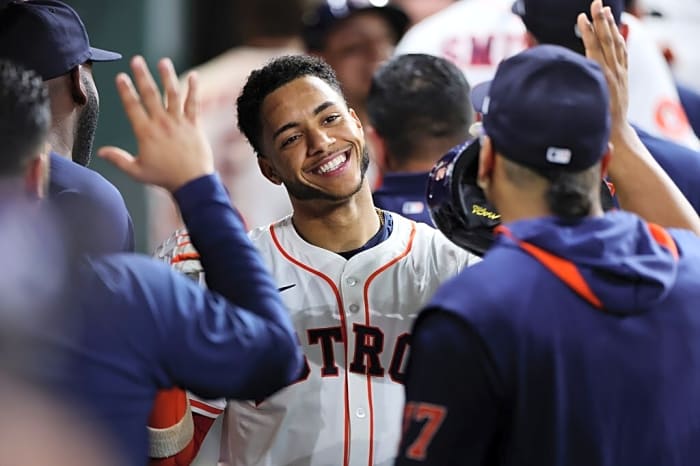
When Jeremy Peña, 27, posted a 102 wRC+ and 3.3 fWAR in a rookie season that saw him win World Series MVP, many thought he was a rising star. This year, Peña is finally outdoing what we saw from him in that fateful 2022 season.
In 350 plate appearances thus far, the Astros’ shortstop has slashed a stellar .322/.387/.489 with 11 home runs, 15 stolen bases, a 146 wRC+, and a career-best 4.1 fWAR. This is the best version of Peña that we’ve seen.
A big reason for this improvement has been that Peña is striking out at a career-best 15.7% rate. By putting more balls in play than ever, he’s letting his elite sprint speed put pressure on opposing defenses.
Peña had been a below-average hitter by xwOBA for his entire career, but this year his .351 xwOBA is better than 72% of major leaguers. Peña is hitting the ball at respectable exit velocities and effective launch angles better than he ever has.
In his rookie season, Peña was one of the best shortstop defenders with 7 OAA. He hasn’t reached that mark since 2022, but this season he’s on pace to do so with 5 OAA.
Offensively, there is reason to believe that some regression is on the way for Peña. His .360 batting average on balls in play is well above his career average, which is likely boosting his batting average. His .290 expected batting average is still great, so he could finish the year as a .300 hitter.
Another reason to question Peña’s output thus far is that he still doesn’t hit that ball that hard. His 88.3 mph average exit velocity is in the bottom 25% of the league. His barrel and hard-hit rates are below average because of this. Peña has a chance to be a 20/20 player this season, but 30/30 is off the table until he can hit the ball harder.
Other Contributors
It’s pretty crazy that the Astros were analyzed in this piece for this long and Jose Altuve, 35, hadn’t been mentioned, but regression seems to be hitting him pretty hard.
Altuve is slashing .269/.331/.447 with well-below average exit velocities, but he’s still managed to hit 15 home runs. He’s still an above average hitter by wRC+ at 117, but that’s the worst mark he’s posted in a full season by that metric since 2012. Altuve is still an everyday player, but no longer elite.
Jake Meyers, 29, is in the midst of a career year with the bat. He’s hitting .307 and his 120 wRC+ and 2.5 fWAR are both career-best marks. This offensive improvement has been huge for Houston, especially since Meyers already plays elite center field defense (10 OAA).
You’ll never believe this, but the Astros have yet another left-handed pitcher with an above-average sweeper that we haven’t gotten to yet. Brandon Walter, 28, is looking like a nice piece for a team in need of back-end rotation depth.
Walter made his major league debut with Boston in 2023 but missed all of 2024 with a rotator cuff strain and was released mid-season. The Astros promptly scooped up Walter and after watching him throw 47.2 innings with a 2.08 ERA in Triple-A, gave him a shot in their rotation.
With a 4.15 ERA in 34.2 innings, the Astros appear to have found a solid arm in Walter. He misses bats at an above average rate (24.6%) and boasts an incredible walk rate (1.6%). Stuff+ likes his aforementioned sweeper (112) and a sinker (110) that he throws just 14% of the time.
Can They Win the American League Pennant?
Absolutely.
It remains a mystery if Alvarez will return anytime soon from that hand fracture but getting him back in the lineup would do wonders for their World Series legitimacy.
The team hopes to see improvement from catcher Yainer Diaz (86 wRC+) and Walker (88 wRC+), each of whom have been quality players in recent seasons. Getting them right would provide an impact akin to acquiring a big bat at the trade deadline.
Houston doesn’t have a particularly strong farm system as a trade deadline buyer, but the Astros could probably use both a left-handed bat and another solid starting pitcher. Their only healthy regular that bats left-handed is Meyers, so a strong-side platoon bopper would slot into this lineup nicely.
As for the pitching, starting Brown and Valdez in games one and two of a playoff series would be perfect. Once they get to game three, however, there’s no clear option. Walter, Lance McCullers Jr. (5.82 ERA), or Colton Gordon (4.37 ERA) would be the most likely hurlers to take the ball in these other pivotal playoff contests currently.
Addressing these two needs might make the Astros the favorite to represent the American League in the World Series. What an incredible accomplishment that would be for a team that traded away one of baseball’s best players this past off-season.
More must-reads:
- Six takeaways from the 2025 MLB All-Star Game
- All-Star appearances shine a spotlight on Pirates' incompetence
- The 'No. 1 overall MLB Draft picks' quiz
Breaking News
Trending News
Customize Your Newsletter
 +
+
Get the latest news and rumors, customized to your favorite sports and teams. Emailed daily. Always free!




